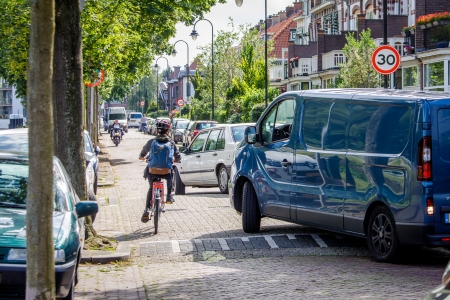A risk-based approach is a form of a proactive road safety policy that has attracted growing government attention in the Netherlands (see for instance [64] [65] [66] [67]). This approach is also part of the Dutch Strategic Road Safety Plan [54]. A proactive policy implies that the traffic system is made safer before crashes have actually occurred. In aiming to prevent crashes and serious injuries, Sustainable Safety is a typical example of a proactive policy (also see the question What does Sustainable Safety imply?) that may serve as a basis for a risk-based policy. A risk-based approach makes use of the characteristics of the traffic system – for instance road layout or dangerous behaviour – which show a strong causal link with the occurrence or the severity of crashes (see for instance [45] [68] [69])
In the context of Sustainable Safety, the Netherlands have had a proactive road safety policy for many years. In recent years, however, a shift in emphasis has emerged. Until recently, the proactive policy involved the implementation of countermeasures for those locations and for those road user groups where possible road safety problems were expected to occur. This policy was usually not guided by indicators of specific location or area characteristics, the so-called Safety Performance Indicators (SPIs; for an overview, see for instance [70].
Different domains have their own SPIs:
- safe infrastructure;
- safe vehicles;
- safe speed;
- safe road users;
- excellent trauma care.
SPIs may be used to find out to what extent the generic proactive policy has already been implemented at specific locations (for instance a safe infrastructure) and has led to the desired results (for instance safe speeds, (hardly) anyone drink driving anymore). A risk-based policy starts from the scores concerning one or more of these SPIs and a subsequent approach to get higher scores and improved safety. For years now, a similar approach has been followed by Sweden (see for instance [71]). Moreover, in Sweden SPIs are linked to stakeholders who may influence the relevant indicators, such as road authorities, insurance companies, the taxi industry, or enforcers. This is an excellent example of how the Sustainable Safety principle ‘Responsiblity’ may take shape (also see the question What does the organization principle ‘Responsibility’ imply?).
